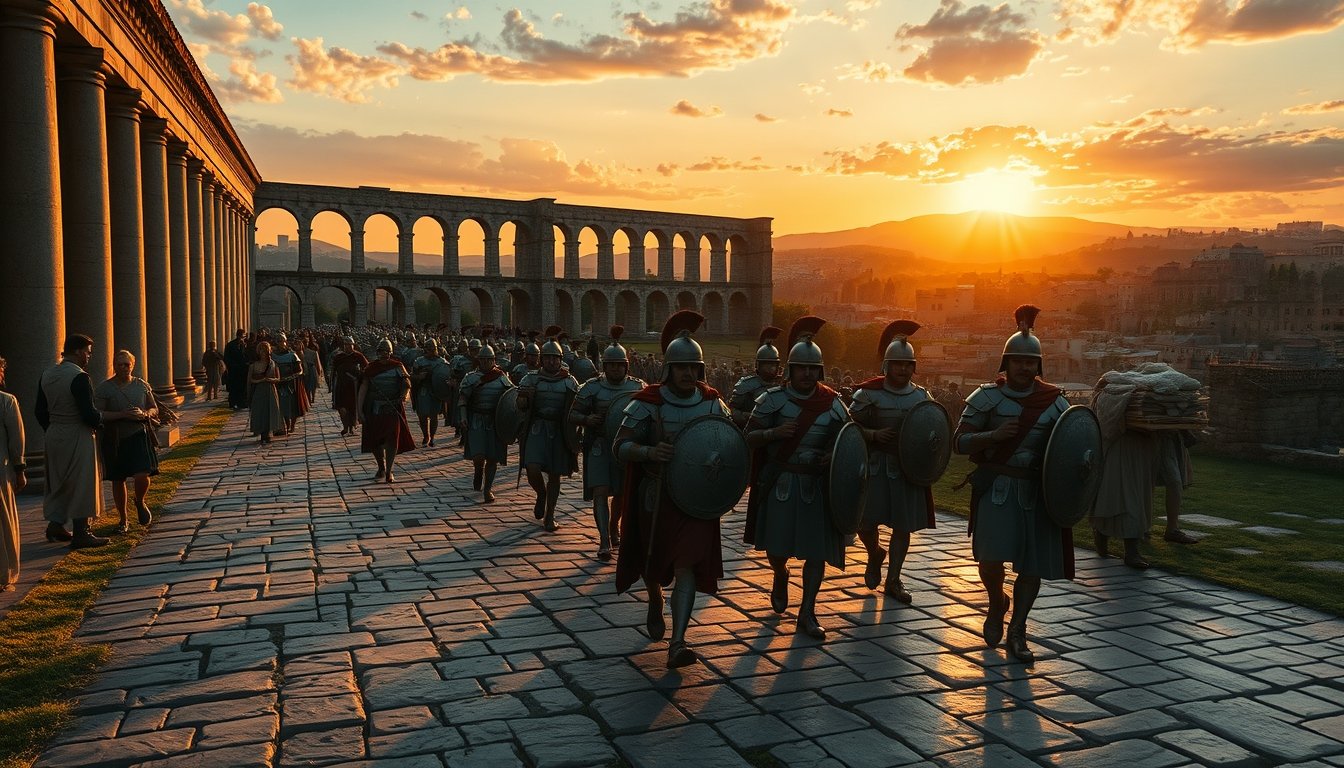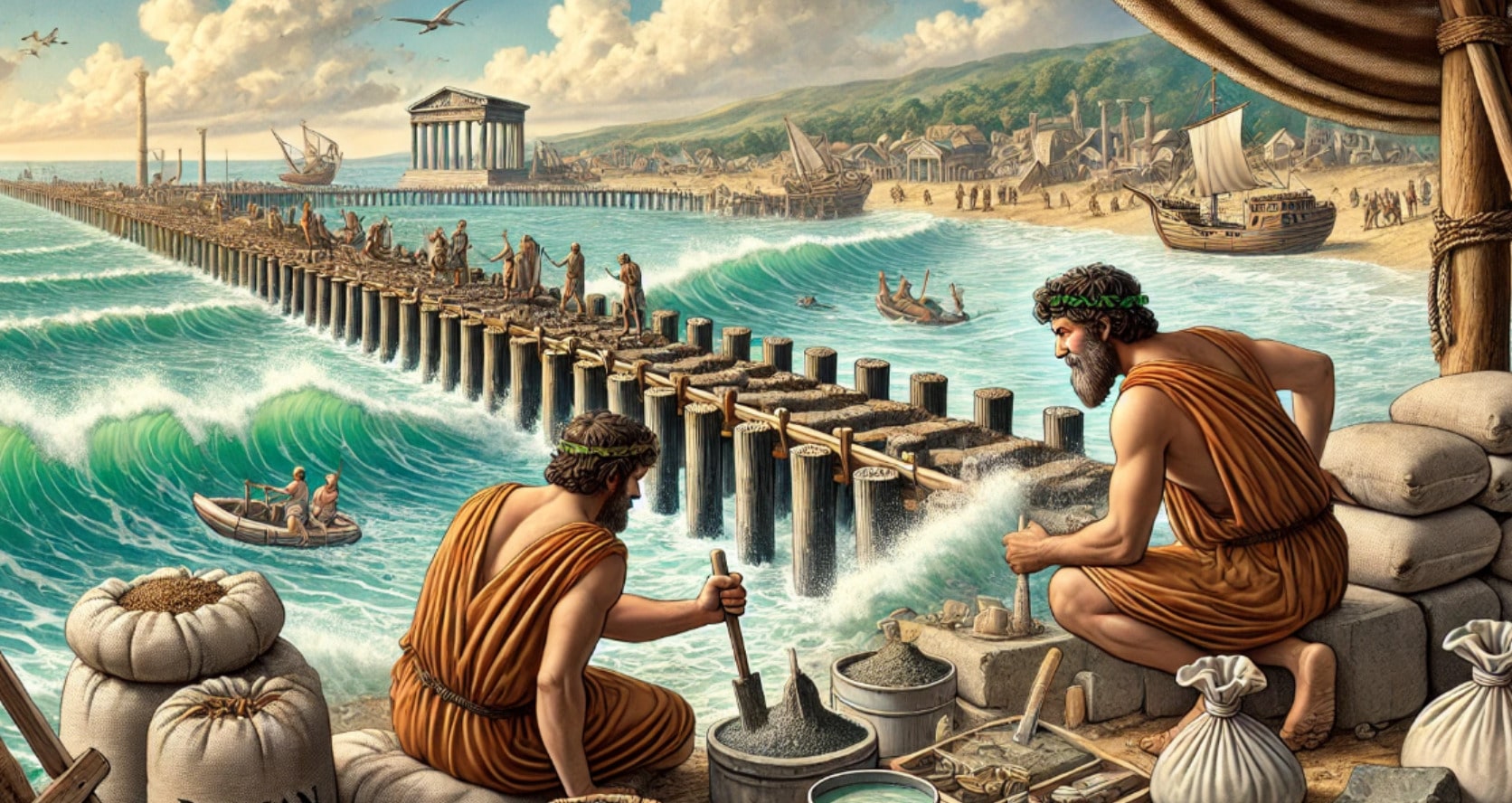We’re going to explore one of the most fascinating aspects of the Roman Empire: its astonishing logistical capabilities. You’ve probably heard of the invincible Roman legions or their impressive buildings, but did you know that without a well-organized logistical network, the empire would never have achieved its greatness?
Join us until the end to discover how Rome used logistics as a tool of power, leaving a legacy that has endured throughout history.
The Roman Infrastructure
The logistics of the Roman Empire relied on a monumental infrastructure. The Romans built over fifty thousand miles of roads known as viae. These roads were much more than just paths; they were vital arteries that connected cities, markets, and military posts throughout the empire. Roman engineers developed advanced techniques to ensure that the roads were strong and durable. Layers of compacted stone, gravel, and sand, along with drainage systems, kept these pathways in top condition.
But why were these roads so crucial? Thanks to them, Roman legions could move quickly and efficiently. A legion, consisting of around five thousand soldiers, could travel approximately thirty kilometres a day. In addition, roads allowed for the transport of essential supplies, ensuring that troops were well fed and ready for battle at any time. Roman infrastructure made it possible not only to defend the empire, but also to expand it.
Supply and Warehouses
Now let’s move on to the supply system. The Roman Empire developed a network of warehouses, called horrea, strategically located along its routes. These warehouses stored food, weapons, and other resources needed by the legions and the civilian population. Imagine what it took to keep five thousand soldiers supplied daily with grain, dried meat, water, and more. The organization and distribution of these resources was essential for military campaigns to be successful.
Logistics were not limited to the military, either. In large cities like Rome, home to over a million people, food supply was a constant challenge. Grain, which was imported from places like Egypt, arrived at the port of Ostia and was stored in giant warehouses before being distributed to the population. The Romans knew that keeping the population well-fed was crucial to social and political stability.
River and Sea Routes
Controlling river and sea routes was another fundamental pillar of Roman logistics. The Mediterranean Sea, or “Mare Nostrum” as the Romans called it, was a water highway that connected the entire empire. The Romans developed a powerful navy to protect these routes and ensure that supplies arrived safely. Transporting goods by sea was much faster and more efficient than by land, allowing Rome to maintain its trade and defense network.
Maritime trade was not only vital to the military, but also to the economy. Grain from Egypt, olive oil from Hispania and wine from Gaul were transported by sea, distributing wealth throughout the empire. Maritime logistics were so important that the Romans even built harbours and lighthouses to improve navigation and ensure that trade routes were safe and efficient.
The Postal System and Civil Administration
Roman logistics also included a fast and efficient system of communication. The cursus publicus was an imperial messaging system that used relay stations along the roads. Messengers could change horses at these stations, ensuring that imperial news and orders reached the farthest provinces in record time. This system was fundamental to the administration of the empire, allowing the emperor’s decrees and decisions to be implemented quickly.
Furthermore, the Romans implemented an administrative system that relied on logistics to function smoothly. Provinces were managed efficiently by the ability to move resources, officials, and soldiers quickly. Without this logistical control, the empire would not have been able to hold together for so many centuries.
Water Supply and Urban Well-Being
Another incredible aspect of Roman logistics was the water supply. Aqueducts carried water from the mountains to the cities, providing a constant flow for fountains, thermal baths and sanitation systems. This water was essential for maintaining hygiene and health in the cities, and also allowed the operation of public baths, which were a social meeting point.
Rome depended on an impeccable logistical system to manage this resource. Imagine a city of over a million inhabitants, all needing water on a daily basis. Without aqueducts and an efficient distribution system, the city would have collapsed. This shows that logistics did not just sustain the army or the economy, but also improved the quality of life of the citizens.
Rome’s Logistical Legacy
Finally, let’s talk about the legacy of Roman logistics. The lessons learned by the Romans have influenced the way we manage resources today. From urban planning to transportation and trade, many of the logistics strategies developed by the Romans are still relevant. Their ability to manage such a vast empire with efficiency and precision is a testament to their organizational genius.
Finally, let’s talk about the legacy of Roman logistics. The lessons learned by the Romans have influenced the way we manage resources today. From urban planning to transportation and trade, many of the logistics strategies developed by the Romans are still relevant. Their ability to manage such a vast empire with efficiency and precision is a testament to their organizational genius.
Logistics was the invisible engine that allowed Rome to expand and prosper for over five hundred years. And although today we no longer have Roman legions marching along stone roads, the influence of their logistics system is still felt in our modern infrastructure.



